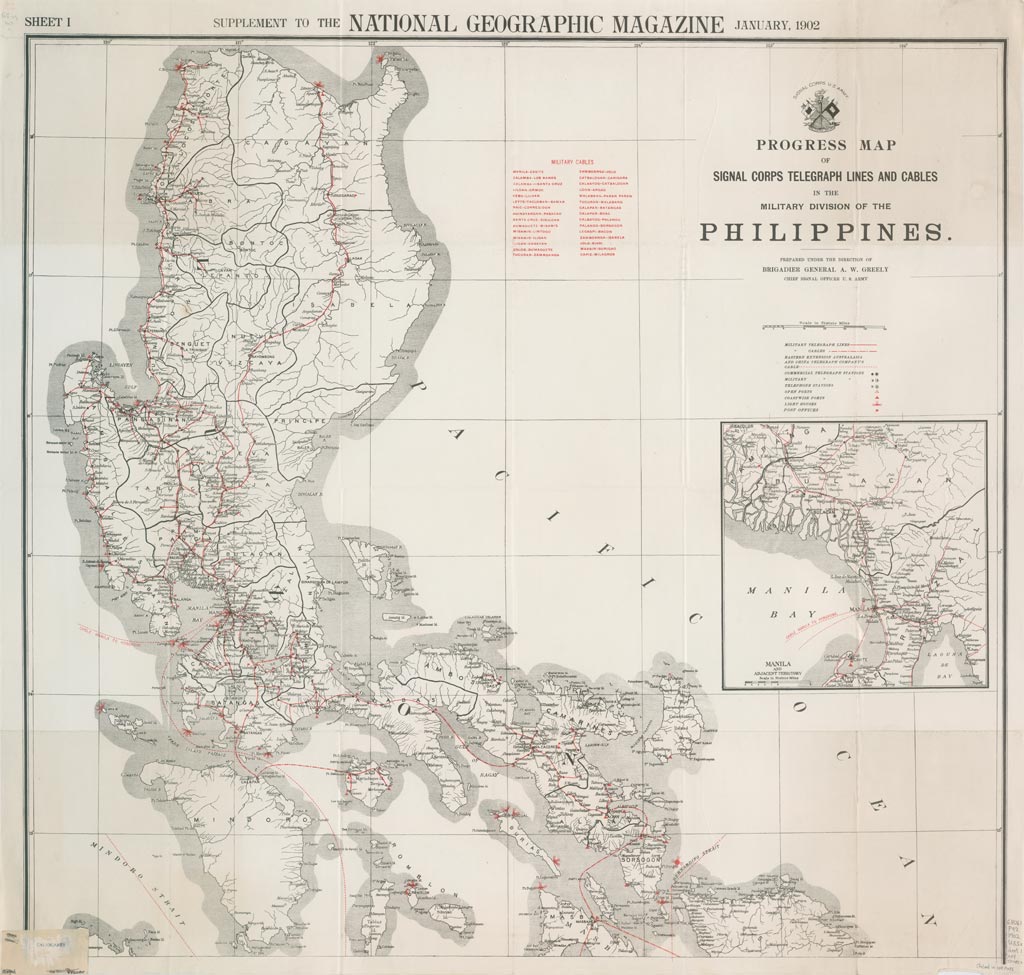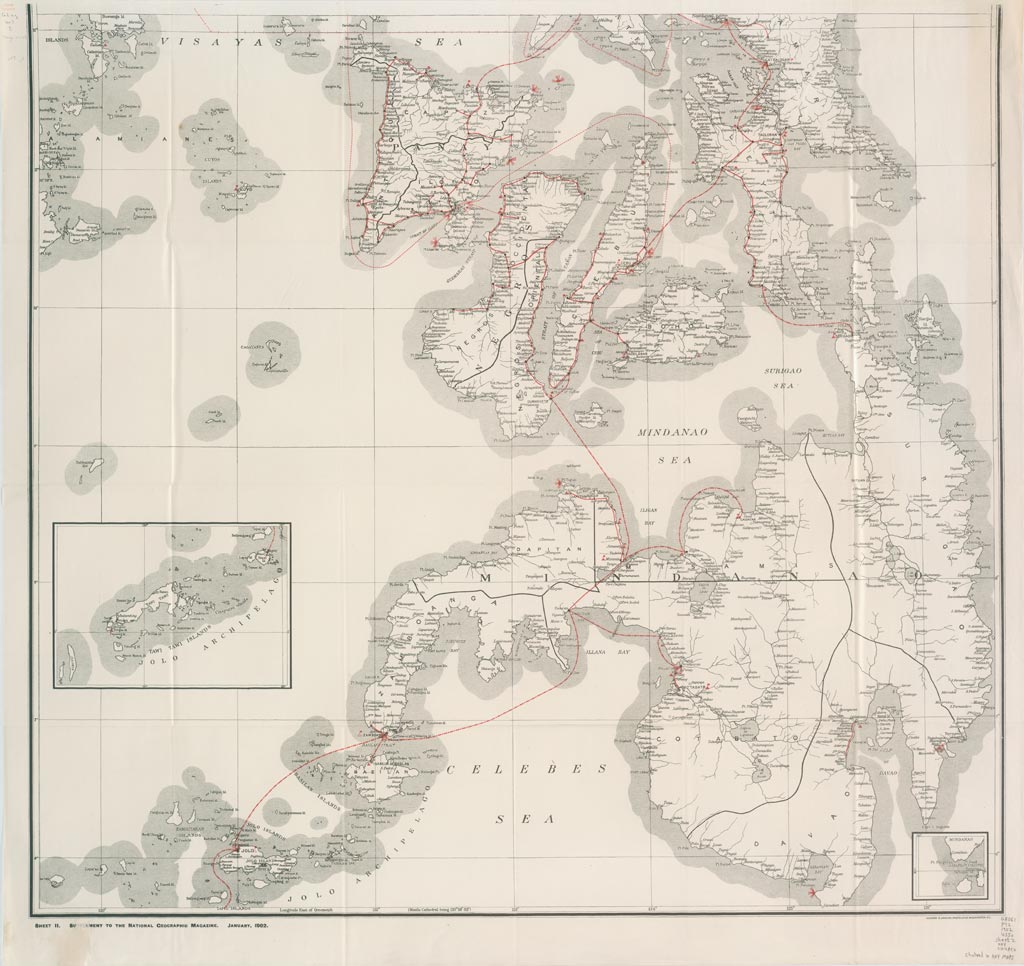The World-Wide Telegraph
June 27, 2013 by btylr | Comments Off on The World-Wide Telegraph
Digital Production Services routinely photographs rare or oversize items requested by researchers for use in publications. In the event that these materials are out of copyright, many of these requests are added to the Brown Olio digital collection, a group of miscellaneous items published apart from “signature collections” or other online digital projects.
Shown below is a January 1902 two-sheet supplement to National Geographic Magazine, depicting in detail “Telegraph Lines and Cables in the Military Division of the Philippines” (map produced by the U.S. Army Signal Corps). The included visual key distinguishes between “military telegraph lines, military cables, Eastern Extension Australasia and China Telegraph Company’s cable, commercial telegraph stations, military telegraph stations, telephone stations, open ports, coastwise ports, light houses, and post offices” (click on each section below for zoomable views).
Tom Standage’s popular book The Victorian Internet: The Remarkable Story of the Telegraph and the Nineteenth Century’s On-line Pioneers (New York: Walker and Company, 1998) recounts the spread of the telegraph system throughout the 19th century and beyond. A more detailed account of the development of telegraph cables in the Pacific can be found in Robert W. D. Boyce’s “Imperial Dreams and National Realities: Britain, Canada and the Struggle for a Pacific Telegraph Cable, 1879–1902” (The English Historical Review, Vol. 115, No. 460 [Feb., 2000], pp. 39–70).





